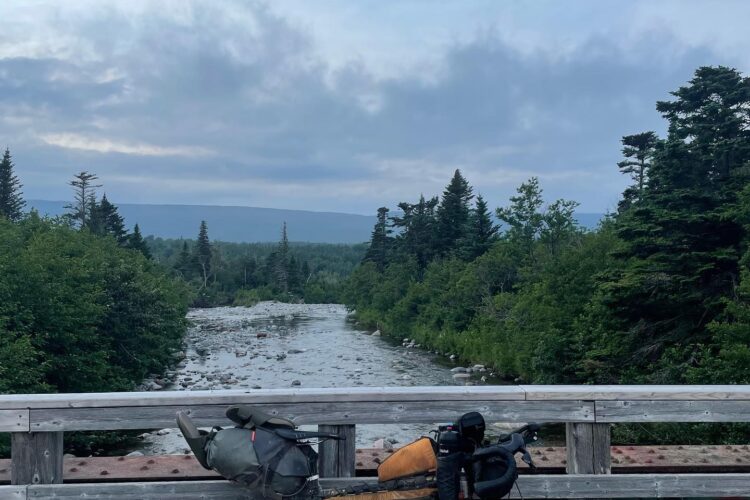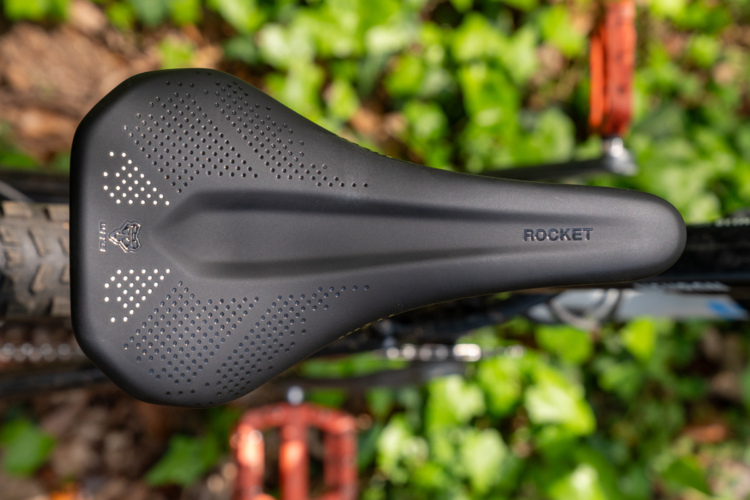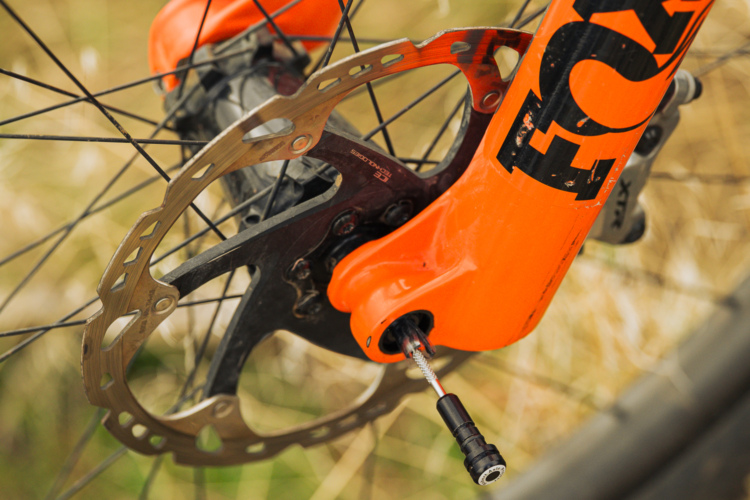
Gabriel Tiller has always liked being outside. When he launched his first professional career as a graphic designer, he quickly found that it wasn’t for him. “I wasn’t stoked on my career choice,” he said. The outdoors have been a fundamental part of his life and he wanted to be closer to them, one way or another.
“[The outdoors] shaped who I am and my life and made me a better person being in these natural places.” Tiller departed his design career and started as a bikepacking guide, learning how to design routes instead and curate the stories behind the trails. Eventually, time as a guide revealed how much he enjoys facilitating natural experiences for people and even though he knew he wouldn’t be a guide for long, he started working with the Travel Oregon tourism agency and helped identify an opportunity for the state: a trail from north to south where people could bikepack or hike the state’s length.
This turned out to be the Oregon Timber Trail, a 700-mile route from the Columbia River Gorge at the Oregon and Washington border down to the top of California.
The process taught Tiller a lot: creating a route become more viable when there was an organization backing it, thus turning the group of trail advocates into the Oregon Timber Trail Alliance. It was a long process—or a “tall order,” making the OTT a reality, Tiller explains, but rewarding.
“Our strategy there was to create a route, an organization, build a community around that organization. So instead of five or six of us saying we should have a mountain bike route, now theres five or six thousand of us saying we should have a hut-to-hut mountain bike route. That was the strategy there. It’s a long game.”
As soon as the OTT was wrapped up an even more tempting proposition showed itself.
“When we published the Oregon Timber Trail, another route called the Baja Divide was published the same year,” he said. “And if you look at the two on the map, you’re like, we’ll we’ve got to connect the two through California. They’re both these two linear routes. They’re pointing at each other. So it just seemed like the obvious thing to do.”
The Orogenesis organization—right now consisting solely of Tiller and under the Bikepacking Roots’ nonprofit status—crossed the start line this summer. When it’s done, it will utilize the Cross-Washington mountain bike route to extend north, and along with several other routes, including the Baja Divide to plunge south, sandwiching the Oregon Timber Trail. It’ll run about 5,000 miles from the Canadian border to the tip of the Baja peninsula.
Tiller said he’s working about three-quarters time on the Orogenesis project. Plus some more. He leads writing, imaging, fundraising, and mapping, though he is hoping to put more funding toward expanding the team in 2023.
“In order to achieve what we’re trying to achieve, we need to have a much larger staff than one.”
A major part of the process is filling in gaps where they can.
“Along those 5,000 miles there’s about 200 miles of gaps where there isn’t a trail currently.” There are workarounds and detours but some of them spit riders onto a highway or a long stretch of road. In one section in the Western Sierra Nevadas, if they were to build one-and-a-half miles of trail it would eliminate 60-miles of road riding.
At an average estimate of $6-$7 per foot of trail built, Tiller estimates the costs of completing the route at around $8 million. Orogenesis is working with regional mountain bike organizations across the route and pursuing IMBA-level grants. Completion will take a long time and it will continually change, like most long-distance, natural surface routes.
Tiller might publish the route in sections since completion with 200 miles of needed trail will take many years. The Western Sierra Nevadas seem to be the most challenging part of Orogenesis.
Still, Tiller is stoked to be part of such a huge project with a huge potential impact. With mountain biking consolidated into so many networks, he’s excited about introducing more people to life-changing backcountry experiences.
“If you look at the PCT for example, anyone who spends more than a couple weeks on the PCT, that’s a life-changing experience for them,” said Tiller. “They’re going to remember those experiences for the rest of their lives.”
Follow the Orogenesis progress on their Instagram account or at the Bikepacking Roots website. Interested folks can subscribe for updates or donate on the page.




















0 Comments